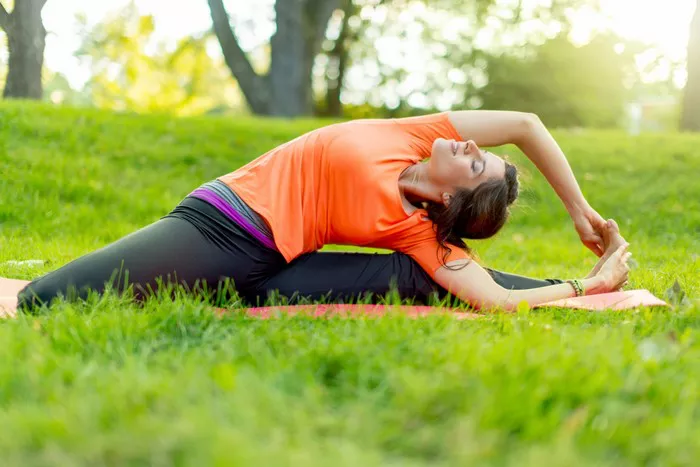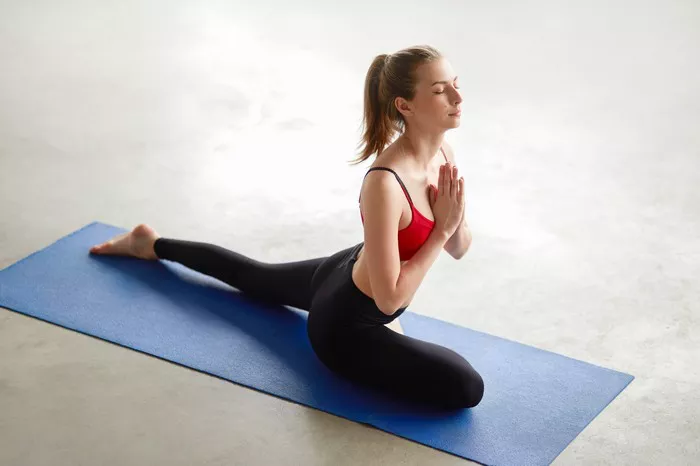Yoga, an ancient practice that originated in India, encompasses a wide array of poses, each with its unique benefits and symbolism. Among these poses is the Tiger Pose, also known as Vyaghrasana. This dynamic asana combines strength, flexibility, and mindfulness, offering practitioners a holistic approach to physical and mental well-being. In this comprehensive guide, we delve into the origins and symbolism of the Tiger Pose, its physical and mental benefits, variations and modifications, step-by-step instructions for practice, and important precautions and contraindications.
Origins and Symbolism
The Tiger Pose, like many yoga poses, draws its inspiration from nature. Tigers, revered for their strength, agility, and grace, serve as a symbol of power and vitality in various cultures. In yoga philosophy, the tiger represents courage, determination, and the ability to overcome obstacles with grace and poise.
Historically, Vyaghrasana finds its roots in ancient yogic texts such as the Hatha Yoga Pradipika and the Gheranda Samhita. These texts describe the asana as a way to awaken the manipura chakra, the energy center located at the solar plexus, which governs self-confidence and personal power. By embodying the qualities of the tiger, practitioners aim to cultivate inner strength and resilience both on and off the mat.
Physical and Mental Benefits
The Tiger Pose offers a plethora of benefits for both the body and mind, making it a valuable addition to any yoga practice.
Physically, Vyaghrasana strengthens the muscles of the core, arms, and legs, improving stability and balance. The dynamic movement of extending the leg backward engages the glutes and hamstrings while stretching the hip flexors and quadriceps. Additionally, the spinal twist inherent in the pose stimulates the digestive organs, aiding in digestion and detoxification.
Mentally, practicing the Tiger Pose promotes focus, concentration, and mindfulness. The fluid motion of moving in and out of the pose with the breath encourages a state of moving meditation, quieting the mind and reducing stress and anxiety. As practitioners synchronize breath with movement, they cultivate a sense of presence and awareness, fostering a deeper connection between mind, body, and spirit.
Variations and Modifications
Like many yoga poses, the Tiger Pose can be modified to suit practitioners of all levels and abilities. Here are some variations and modifications to explore:
1. Half Tiger Pose: For beginners or those with limited mobility, start by performing the pose with only one leg at a time. From a tabletop position, extend one leg backward while keeping the opposite knee and foot grounded. Focus on maintaining stability and alignment in the spine as you move through the motion.
2. Supported Tiger Pose: Place a folded blanket or bolster under the knees for extra support, especially if you experience discomfort in the knees or wrists. This modification helps alleviate pressure and allows for a more comfortable practice.
3. Extended Tiger Pose: To deepen the stretch in the hip flexors and quadriceps, experiment with extending the lifted leg further back while keeping the hips square. Be mindful not to overarch the lower back or strain the neck and shoulders.
4. Tiger Pose with Arm Variation: Add an arm variation by reaching the opposite arm forward as you extend the leg backward. This variation enhances the balance challenge while also engaging the muscles of the upper body.
5. Wall Support: Practice the pose near a wall for added stability and support. Place your hands on the wall as you extend the leg backward, using the wall to assist in maintaining alignment and balance.
By exploring these variations and modifications, practitioners can tailor the Tiger Pose to their individual needs and abilities, making it accessible to a wide range of students.
Step-by-Step Instructions
To practice the Tiger Pose safely and effectively, follow these step-by-step instructions:
- Begin in a tabletop position with your wrists aligned under your shoulders and your knees under your hips.
- Inhale as you lengthen your spine and engage your core muscles.
- On the exhale, engage your abdominal muscles as you extend your right leg straight back behind you, keeping your toes pointed towards the floor.
- Simultaneously, lift your left arm forward, reaching it parallel to the floor, with your palm facing inwards.
- Hold the pose for a few breaths, maintaining stability and balance.
- On an inhale, slowly return to the starting position, bringing your knee and hand back to the mat.
- Repeat on the opposite side, extending your left leg back and lifting your right arm forward.
- Continue alternating sides for several rounds, moving with the rhythm of your breath.
- After completing both sides, return to a neutral tabletop position and rest in Child’s Pose to release any tension in the spine and hips.
Precautions and Contraindications
While the Tiger Pose offers numerous benefits, it may not be suitable for everyone. As with any yoga pose, it’s essential to practice with mindfulness and awareness of your body’s limitations. Here are some precautions and contraindications to consider:
1. Injury or Pain: If you have a history of wrist, knee, or shoulder injuries, approach the Tiger Pose with caution. Modify the pose as needed to avoid exacerbating existing pain or discomfort.
2. Pregnancy: Pregnant individuals should avoid deep backbends and twists, making the Tiger Pose unsuitable during pregnancy. Opt for gentler prenatal yoga poses that support and nurture both mother and baby.
3. High Blood Pressure: Individuals with high blood pressure should avoid holding their breath or straining during the pose. Practice with a focus on smooth, steady breath and avoid overexertion.
4. Recent Abdominal Surgery: If you have undergone recent abdominal surgery, consult with your healthcare provider before practicing the Tiger Pose, as it may put strain on the abdominal muscles and incision site.
Listen to your body and honor its wisdom as you explore the Tiger Pose. If you experience any pain or discomfort, ease out of the pose and seek guidance from a qualified yoga instructor or healthcare professional.
Conclusion
In conclusion, the Tiger Pose offers a dynamic blend of strength, flexibility, and mindfulness, inviting practitioners to embody the qualities of the majestic tiger. By exploring its origins, benefits, variations, and precautions, yogis can cultivate a deeper understanding and appreciation for this empowering asana. Whether you’re seeking physical strength, mental clarity, or spiritual awakening, the Tiger Pose holds the potential to transform your practice and enrich your life both on and off the mat.
















